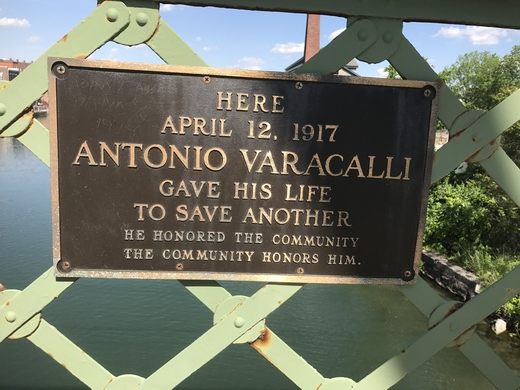To anyone familiar with the Women's Suffrage Movement in the U.S., Seneca Falls is where the organized movement began. To sentimental movie fans, it may light up mostly as the inspiration for the fictional Bedford Falls in 'It's a Wonderful Life.'
But very few will recognize it for its place in history and invention, and even fewer will realize that the town owes its existence to a 1779 genocide, in which the U.S. sent the Sullivan Expedition to punish the Cayugas for siding with the British by destroying their villages and crops, and slaughtering the warriors. Afterward, their lands were set aside for distribution to ex-soldiers.
But move ahead. Seneca Falls and most of the Central New York-Finger Lakes region took a while to take off; it was largely agricultural until the 1820s when the Erie Canal connected the Great Lakes to the Hudson River, and the Seneca River, which passes through town, was partly channeled to connect the area to the Erie Canal.
Once that happened, industry happened. The river's series of falls provided power for mills, distilleries, tanneries and other industries; the little village became, after Rochester and Oswego, the world's largest flour milling centers. These days, with the river completely canalized, there are no falls in Seneca Falls; the local tourist office helps puzzled visitors who are looking for them.
There's not much industry of that sort in Seneca Falls today, but in its heyday it was 'parent' to important technology. Birdsill Holly, who started as a mechanic in a local factory went on to invent pumps and water supply techniques still in use, including fire hydrants; another employee invented a modern steam fire engine, although he moved the company to Elmira, where it became American LaFrance.
But the lasting mark for Seneca Falls came in the 1840s, when it not very willingly hosted a convention of advocates for women's rights, and even for women's votes. Seneca Falls as the location was nearly an accident: It happened there because Elizabeth Cady Stanton and her family had moved to Seneca Falls from Boston, where they had been active in social movements, including the abolition movement.
In Boston, and in other Abolitionist circles she had become friends with others such as Lucretia Mott, Frederick Douglass and William Lloyd Garrison. In Seneca Falls, though she found herself cut off from those circles, her interest continued, and especially an interest in women's rights—especially after having been denied, as a woman, her seat at a London anti-slavery convention. On her initiative, and with help from Mott and others, a convention was called.
The convention took place in a small Methodist church, known locally as the Wesleyan Chapel and founded five years before by Abolitionists. It is now a centerpiece of the Women's Rights National Historic Park, established in 1980, along with Stanton's home in town.
Above, a 1908 reunion of women's movement leaders and children of the original delegates; below, the chapel in the 1950s as a laundromat
Over the years, the chapel became a theatre, a garage, a store and a laundry, with alterations over the years erasing not only memories, but even the shape of the building. When the National Park Service took it over to restore to its original appearance, they used new brick to make it obvious how little of the original could be saved.
These pandemic days, only outdoor visits are available; both the Chapel and the nearby visitor center have much more to be seen in future.
Not far from the Chapel and other sights, there's a pleasant waterfront park along the canalized river, and near that the famous bridge, modeled elswehere for the climactic scene of 'Wonderful Life.'
A plaque on the bridge notes the film connections; another plaque honors a young immigrant worker whose story apparently led filmmaker Frank Capra to weave the scene into the script; it was not in the original story the film was based on.
Meanwhile, back on the main street, an eclectic mix of mostly-Victorian retail buildings, with some interesting signs in the windows. Some quite clearly political, some riding on 'Wonderful Life' references, and the last one perhaps a little of both.
A few of the storefront were worth looking at even without the signs...
And at the end of the street, just past the Wonderful Life Museum, there is an impressive stone church, backing up to the river, and another small waterside park, this one in honor of the Women's Suffrage Movement.



Comments (0)